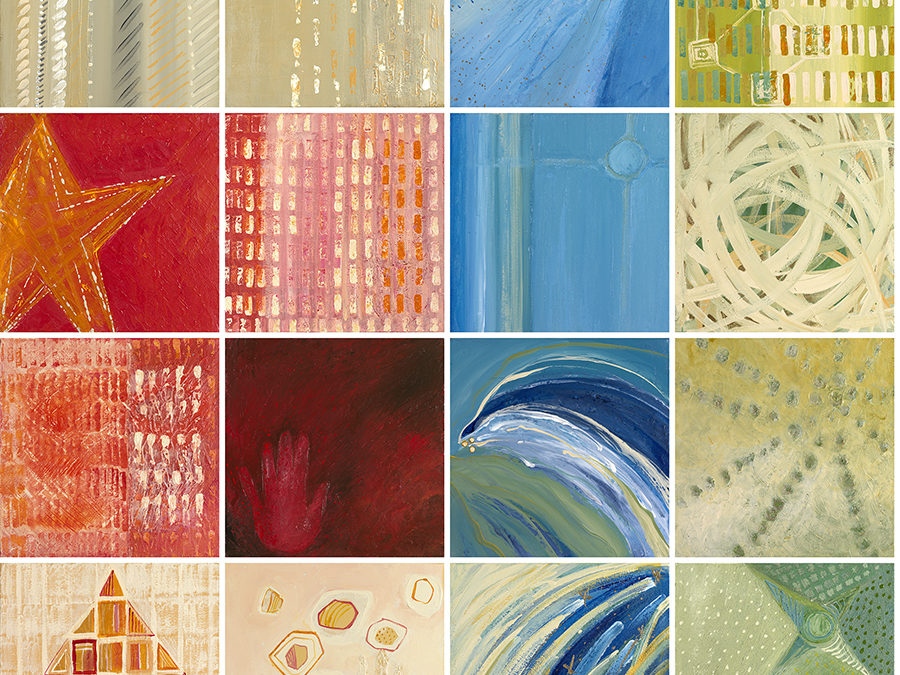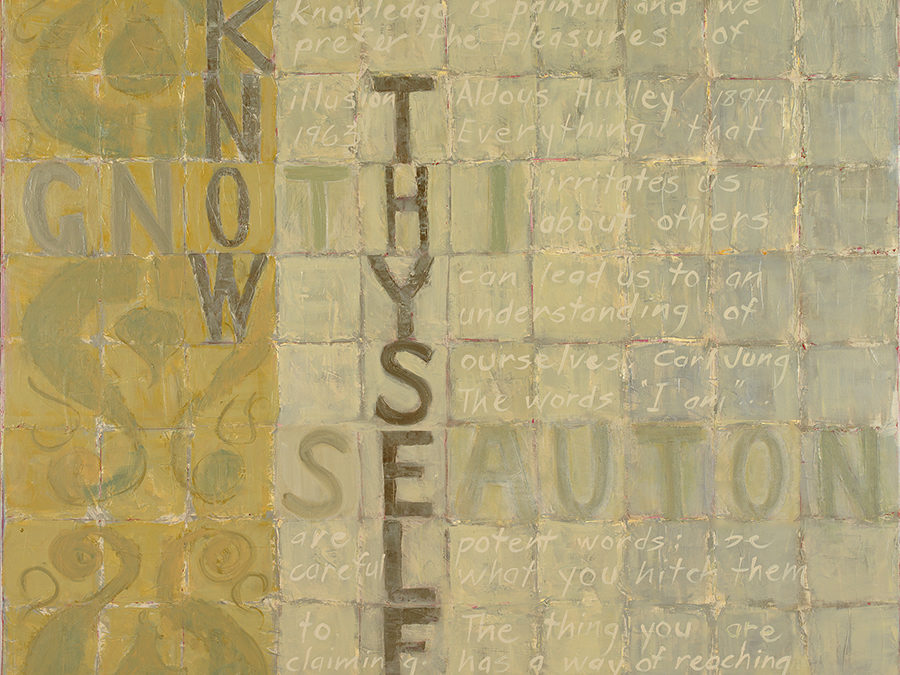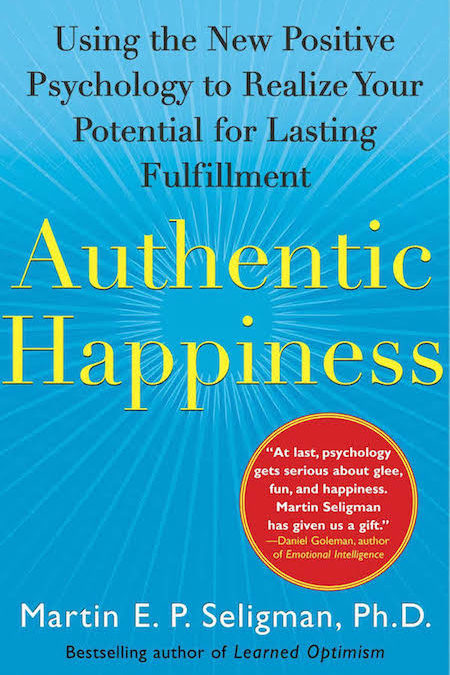
by Sandy | Aug 12, 2018 | MBTI Facts, Other Personality Assessments
My first response to this question about Extroverts capability to listen was an automatic and very vocal ABSOLUTELY.
In saying that I recognize that the MBTI simply looks at preferences and not capability but it can also point out potential “blindspots” and “By George” I think I just discovered one.
Lesley Parrott, queen of the Insights Discovery inventory, a preference based system built on the work of Jung, very kindly pointed out that Extroverts often want to align with others and this can affect how they listen. She want on to demonstrate the LISTEN and ADD technique
Person A – I had this awesome life shattering experience trekking in the Himalayas (Or whatever else the topic may be)
Person E for Extrovert (adds without a breath in between) I know I know when I backpacked through Poughkeepsie yada yada….
I blushed because I am SO guilty of doing that. I sometimes approach conversation as if it was improv.
Lesley went on to identify how great radio interviewers such as the late great Canadian host Peter Gzowski could ask a question and then let it sit out there in silence giving the person a chance to answer.
The secret to listening … SHUT UP and WAIT for a response or continuation of the thought.
Can you leave “dead” air? What are the chances you might hear something that you might have missed if you filled the void?

by Sandy | Jul 3, 2018 | MBTI Facts, Other Personality Assessments
When people ask me what I do and I mention assessments such as the MBTI, I get a variety of reactions. Some people’s eyes glaze over as they say “You what?” Obviously they have never experienced a personality assessment other than possibly a quiz in a magazine they may have done as a teenager. There are others who say “I did that once”, but have no idea which tool was used nor what their particular results indicated. The rare individual can rhyme off their results from a variety of assessment tools and indicate how they play out in their work life. What is common is that people who have done one of the temperament assessments or another 4 part, model such as Social Styles will remember either the colour or an aspect of their type.
In a recent conversation, a woman was excited to talk about just how Gold she was – “off the charts” as she described her uber-organized style. She had a real sense of how those preferences suited the work she was in and just as aware of how it was a source of possible friction in her home life.
What occurred to me during our conversation was how useful a simple model was in a work context where people have something like colour to anchor their memory. Assessments of any kind are only of value if they are applied. What does this tell me about my strengths? What does it tell me about how others may perceive my actions? How can I become increasingly aware of my “blindspots”?
The other thought I had was that personal development is so important to me that at times I forget that some people could care less. Those of us who see the value in using tools to learn about ourselves and others, may readily see that having insights from a number of tools is simply a more meaningful approach to understanding. Those who value personal development are willing to take the time to learn about and apply more complex instruments.
So even though I have a personal preference for the distinctions made by the Step 2 version of the MBTI that gives a break down of 5 sub-pairs for each preference pair, some people simply want to know I am Gold and this is a good thing for my job. What works depends on the context and the interest of the people involved. Start wherever you are. KISS Keep it simple is sometimes the best motto.

by Sandy | Jun 25, 2018 | Other Personality Assessments, Reiss Motivation Profile
Why am I talking about “desire” on a blog that has much of its content to be dedicated to the MBTI?
Personality assessments are tools. The way I like to use them – they are tools to use as a lens to open a conversation or inquiry. The purpose of the exploration being gaining knowledge of self or others. And as the old adage goes a “Woman is only as good as her tools.” If she has only one tool she is limited in what gets built. To continue with the cliches “if you only have a hammer everything becomes a nail.”
Hence, my passion for knowing multiple assessment tools. When I have multiple lenses the look through I see aspects that aren’t illuminates by just one facet of the prism. I have picked three tools to focus on that work for me: the MBTI for understanding how we process information and make decisions, the Enneagram for a deeper look at worlview and the resulting dynamics and the Reiss Desire Profile for exploring core motivation. Some of the others that I am familiar with and recomment for different circumstances include the Kolbe, the DISC, the PIAV and of course other type and tempaerament tools such as Insights, True Colors and the Kiersey Temperament Sorter.
What is the Reiss?
The Reiss Profile is a comprehensive, standardized, objectively validated instrument that assesses 16 basic psychological needs. This knowledge build on work by Maslow and Allport but one differentiator is that Reiss’s work is testable. Dr. Steven Reiss research included over 10,000 surveys with ordinary people across a wide spectrum of life situations. He mathematically reduced hundreds of wants, needs and desires down to be captured by these 16 desires.
Every individual has some proportion of all 16 basic needs. Dr. Reiss was looking to understand values based happiness. What he discovered is that how a person prioritizes the 16 needs can predict their behaviour…whether the person will be an organ donor, how they will respond in school, in romantic situations or with regard to religion.
This profile is a trait based model so that rather than discovering your type, you being to see a constellation of which traits apply to you and which do not.
The 16 basic psychological needs are:
Power, the need for influence of will
Independence, the need for individuality
Curiosity, the need to think
Acceptance, the need for approval
Order, the need for organized, stable, predictable environments
Saving, the need to collect
Honour, the need to be loyal to the traditional values of one’s clan
Idealism, the need for social justice
Social Contact, the need for friends (peer relationships)
Family, the need to raise children
Status, the need for social standing/importance
Vengeance, the need to strike back
Romance, the need for sex
Eating, the need for food
Physical Activity, the need for exercise
Tranquility, the need to be safe
Inner Landscapes looks at a few of these desires in more detail. It may spark your interest to see how this profile might apply to you and your business.

by Sandy | May 9, 2018 | Other Personality Assessments
Question:
I was wondering if you could give any advice on the best way to become a Personality Type professional?
An answer that is 100% opinion:
Hmmmm… this question brings even more questions to mind.
Why?
What is important to you about this?
Is a singular focus such as type professional even a viable option in this day of shrinking training dollars?
If the MBTI, for example, is a tool, what is the ideal context for someone to invest in developing themselves in this area through training?
My thinking on this is that the MBTI or DISC or Enneagram or Social Styles or Insights are all wonderful tools that are adjunct to other areas of expertise. In an organizational setting for example these tools can be of value for team building and / or for leadership development. The question I have is what else do you need to bring to the table in order to facilitate this kind of experience so that the corporate sponsor gets the benefit from their investment. It seems to me that it is a challenge to rely on knowledge of a tool alone. These tools are best used in context. If you have experience working in an HR capacity or as a consultant or coach with additional experience working in organizational settings and in training design, then you begin to have something to bring to the table. It is a hard “go” to come armed only with an assessment tool and have someone recognize that or you as a solution to a current problem.
Having laid out my cautionary message, if you are truly interested in any of these tools, I would recommend immersion until you have ownership of the theory combined with a long list of experiences using the tool with others. It takes time and experience to see that how something may appear to be in written form often takes on a different flavour in the nuanced world of real life. Once you have ownership of one tool you may see that there is another assessment that will compliment the work that you are doing and the needs of your clients: for instance, I found that using the MBTI together with the Hay Group’s Emotional Competency Inventory provides a solid platform to support leadership development.
For every type tool there will be a training that suits your needs best. Some things to consider are reputation, location, advanced training and support as well as cost of the training organization you are considering. Since I am a Canadian, I often make decisions based on what is offered in Canada and whether I prefer what is available in the US. (e.g. this would be Psychometrics for the MBTI and a trip to an Enneagram teacher of choice to the US.) This is partially personal preference as well as what fits the needs of your clients.
If you collaborate with other professionals who LOVE and use DISC with their clients, you might want to consider how much work you will be doing together and the value of having a common language. Research your options by talking to the people you wish to collaborate with, by researching what is already in place in the organizations you work for or hope to work with.
Finally investigate the trainings offered by the publishers of the tool that interests you, find out about other specialized training organizations that may offer training (I am thinking here of the great work done by Otto Kroeger Associates) and type specific associations such as the Association for Psychological Type International.

by Sandy | Mar 12, 2018 | Other Personality Assessments
A Mastermind group that I belong to had the injection of 3 members taking the group to 10. WOW the energy in the room was amplified tenfold and I really had the sense that the new members had shifted the dynamic 100% in a brief hour.
Personality was one aspect of this impact. I could imagine that at least 2 of the 3 members had a preference for Extraversion and Thinking. Since we use Insights as our assessment tool of choice these new members brought a significant injection of Red energy. Insights is a psychometric tool based on the psychology of Carl Jung and is familiar territory to those who know the MBTI and temperament models.
Believe me when I say I was awake for the whole meeting. The pace increased and I had the sense that people were processing quickly and would not tolerate being bored. That certainly caught my attention and it was an exciting element to think of how the conversation was going to be interesting and challenging.
There would be absolutely no going back to a more bucolic pace. We were in for a different kind of meeting.
What’s comfortable and familiar is seductive for many. Even change junkies have places in their lives where they fall back into the familiar. How to you handle change in a group? Are you ready to rewrite “how things are done around here”. to accommodate the needs of the new additions?

by Sandy | Dec 5, 2017 | Other Personality Assessments
“Values in Action” – now there’s a phrase you don’t hear every day but the reality is that these underpin our moment to moment activities.
A while back I co-facilitated with two masterful coaches/consultants Sara Thompson and Elaine Maxwell. Sara and Elaine had worked with this group previously and during that time they had introduced and used Seligman’s “Signature Strengths”. From time to time during this session either Sara or Elaine would observe how a person was speaking from their strengths. As the two days unfolded it was fascinating to see how the combination of a person’s top 5 strengths and the influence of their bottom strengths shaped their perspective and their behaviours.
The twenty-four strengths are explored in Seligman’s book “Authentic Happiness” and there is also an on-line assessment available at http://www.authentichappiness.com Of course at the end of day one, I had to dig out my copy to refresh my memory about my own top five signature strengths:
Appreciation of Beauty
Ingenuity
Curiosity
Judgment
Love of Learning
Almost sounds like a recipe for an artist/coach – don’t you think?.
The one thing that stood out for me watching how Sara and Elaine coached around these strengths, is how if any are overused they can also become a source of problem area for the person. Hmmmm – a personal lesson here maybe? Perhaps instead of continually following my almost insatiable desire for what’s new, what’s next I could stop and follow through with what I have already learned and stay with executing and getting results from all that learning and exploration… Food for thought.






